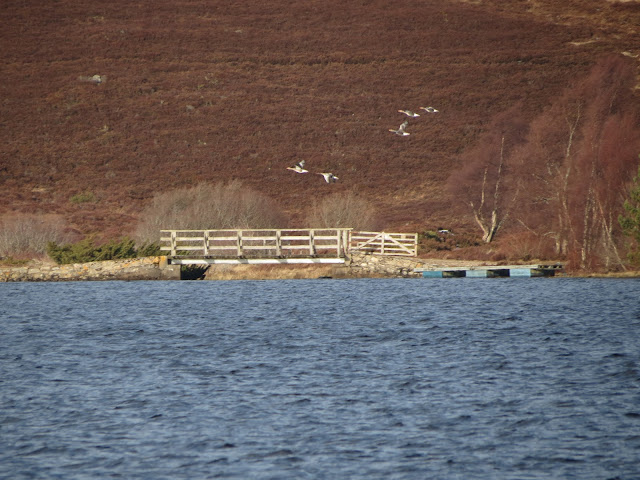Back at Spurn!
Back at Spurn!
We arrived at Spurn at around 8:00am after getting a lift from Dave. We parked at Kilnsea Wetlands and immediately made our way towards Beacon Ponds where a Stilt Sandpiper (which was a lifer) was reported. We reached a small huddle of birders and a kind birder let us view the Stilt Sandpiper through his scope. We then got onto the Stilt Sandpiper in our scopes and I managed to get a few digiscoped images of it through Dave's scope.
The Stilt Sandpiper seemed to be an adult and was hanging around with two Dunlin. It was rotating between both sides of New Bank but spent most of its time on the Kilnsea Wetlands side. While watching the Stilt Sandpiper, we also noticed a few Yellow Wagtails, a Sanderling, two Greenshanks and a very showy and dark-backed Common Sandpiper.
We then made our way back to the car where we met Bob Eckersley. While talking to him, we noticed a Hobby hunting hirundines just across the field, from where we were standing. I could also hear lots of Roesel's Bush Cricket, and after a lot of searching I finally found one (which was surprisingly a lifer for Dave, who has extensive lists of various species).
Once we were back at the car, a report came through of a Red-breasted Flycatcher halfway down The Point at a place called The Narrows. We quickly got in the car and rushed down to the car park. We crossed the annoying breach and joined a crowd of birders. After waiting for a few minutes, the Red-breasted Flycatcher flew out of the scrub it was hiding in and flew a full loop around us before landing right behind us in an area we couldn't view it in. After a bit of waiting, it came out onto the rocks at the bottom and started showing off its distinctive and striking tail pattern.
After a few minutes, the Red-breasted Flycatcher flew further down the bank and landed in a tree, still showing distantly, but well enough for me to get a front-on record shot of it. This was my second lifer of the day, and a very unexpected one. Satisfied with my views, I moved further down towards the point in hopes of finding a few more migrants.
On the way down to the point, I noticed a few small, grey flies flying in front of me in the sand. I took a picture of them and got them identified by an expert as Dune Robberflies, a specialist species of robberfly and a new one for me!
Once we arrived at the point, we noticed numerous Linnets and Goldfinches all flying around the scrub. I also spotted many Barn Swallows drinking water accumulated in an old ruin. Other than that it was surprisingly quiet, with barely any migrant birds. As we continued along the point, we looked around Parade Ground where the Ortolan Bunting was seen yesterday, but all we could find were a few Pied Wagtails and many Starlings.
We then got to the area which was covered in Sea Buckthorn and really good for passing migrants. However, all we managed to find were two Whitethroats along with many Linnets. We then heard, and quickly saw, a very small wader fly overhead. It had a very small bill and was making an odd call. We reviewed a few calls on Collins and at first thought it might be a Little Stint, but we then listened to the Little Ringed Plover flight call and immediately knew that this was our bird. It also flew SW meaning it had just started its journey out of the UK to likely go winter in Africa.
Disappointed, we slowly made our way back to the car. We stopped at the lighthouse for a quick break and as soon as we started moving again, a small, brown bird darted across the path and landed in some scrub near the shore. As we creeped up closer to it, we noticed a small, brown bird with a pale supercilium standing upright on a concrete block. It was a Whinchat! Although it wasn't a migrant, it was still a good bird to see and our first uncommon yet regular migrant. The rest of the way back was fairly quiet, with a few flyover Sandwich Terns along with four Oystercatchers seen. We then did a quick seawatch, spotting a few Gannets and Kittiwakes, but not much else. We also did a quick scan through the waders on the Humber, finding many Knot and Black-tailed Godwits along with a few Grey Plovers and Curlews. We also briefly heard a Whimbrel but couldn't see it. We then made our way back over to Kilnsea Wetlands to see if we could find any more interesting waders.
We arrived at Kilnsea Wetlands at around 5:00pm and made our way over to the hide in hopes of seeing Caspian Gulls and Curlew Sandpipers. Once at the hide, we met Abbey & Hep who were looking at the Caspian Gull and challenged me to find it. Looking at the tertials of all the juvenile gulls, I managed to successfully identify the Caspian Gull and managed to get a record shot of it. We then checked Beacon Ponds where we saw the Stilt Sandpiper again, along with a few Grey Plovers (one in beautiful breeding plumage) all within a large flock of Ringed Plovers and Dunlin. The perfect end to a superb day.
Overall, an incredible day with 2 lifers (Stilt Sandpiper & Red-breasted Flycatcher)!
.jpg)
.jpg)

.JPG)
.JPG)

.JPG)

.JPG)
.JPG)



Comments
Post a Comment